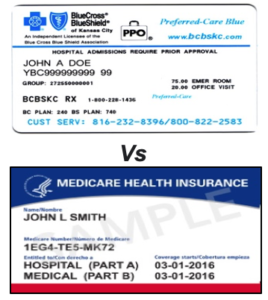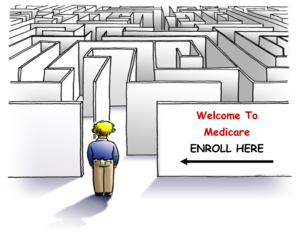Because of general confusion about the rules regarding enrollment in Medicare Part B, nearly 700,000 Medicare beneficiaries are now paying late Part B enrollment penalties according to the Center for Medicare and Medicaid Services.

This is the most common question I get from people approaching 65 who are still working, “Do I have to sign up for Medicare Part B?” They ask that question because they intend to remain enrolled in their employer’s group health insurance plan after turning 65. For most people in 2019, the monthly premium for Part B coverage is $135.50. The premium goes up for individuals with adjusted gross incomes above $85,000 if filing an individual tax return and $170,000 if filing a joint tax return. In fact, there are five additional premium rates depending on one’s AGI.
So the question is why pay the Part B premium if you’re covered by a group plan at work and for which you’re probably paying a portion of the premium through payroll deductions. In such cases, it’s possible to delay your Part B enrollment without a penalty being assessed later when you do enroll in Part B and that’s exactly what many people do. However, for those who have remained in a group plan after their employment ended through COBRA, it’s important to understand that CMS does not consider COBRA to be “creditable coverage”. This means that you would be subject to a late enrollment penalty if you don’t enroll in Medicare Part B within eight months following the termination of your group plan enrollment even if you continued with the group plan enrollment under COBRA.
As people work later in life and delay receiving Social Security, they may not be aware that such a delay means that they won’t be automatically enrolled in Part B when they turn 65. Another misunderstood part of the Medicare enrollment process is the fact that Social Security does not automatically enroll you in Medicare Part B if you aren’t yet receiving your monthly Social Security retirement benefit. Rather, you must make a proactive Medicare Part B enrollment choice as you approach age 65. If you are receiving your monthly Social Security retirement benefit before turning 65, Social Security assumes that you want to be enrolled in both Medicare Part A and B and will deduct the Part B premium from your monthly Social Security retirement benefit. If that’s your situation, and you want to delay your Part B enrollment, you’ll need to proactively inform Social Security that you want to delay your Part B enrollment.
Some in Congress want to make all of this more transparent through legislation called the Beneficiary Enrollment Notification and Eligibility Simplification (BENES) Act. The BENES act has not gained much traction in Congress yet but perhaps this will be one thing on which the new House and existing Senate can agree. Social Security would send out notices to people approaching age 65 explaining Part B enrollment including how the specific enrollment periods work. This should eliminate some of the circumstances where the transition to Part B is mismanaged resulting in lifetime late enrollment penalties.
The rules are complicated and not well understood by most human resource experts in employer benefits departments. They typically lack the Medicare knowledge to guide their employees and retirees on Medicare enrollment. Further, the federal government provides virtually no notification to people who are nearing Medicare eligibility about when and how to do so. As a result, people with employer-sponsored group coverage often bear the full burden of understanding and navigating Medicare’s complex enrollment rules which can lead to costly mistakes. The following are the rules regarding the enrollment periods for Medicare Part B:
1) Initial Enrollment Period–The seven-month period beginning with three months before the 65thbirth month, the birth month, and three months after the birth month.
2) Special Enrollment Period– Available to those who have continued to stay on their own (or their spouse’s) group health plan. Upon termination of their enrollment in the group health plan, they have an eight-month period during which to sign up for Part B in order to avoid the late enrollment penalty.
3) General Enrollment Period– Here’s the nasty one. Using the General Enrollment Period means that the individual has missed their Initial Enrollment Period, or the Special Enrollment Period, and wishes to sign up for Medicare Part B. They fall into the General Enrollment Period, which they can only utilize from January 1 to March 31, but with coverage not beginning until July 1of that year. Depending on when a person chooses to sign up from Jan. 1 to March 31, they may have encountered a “Blackout Period”, which can run up to ten months, or in some cases, even over a year, depending on the sign up time. And that’s where they create the 10% penalty per year for each year, which lasts forever.
‘Greg Says’….The best advice I can offer with regard to the Part B enrollment question is to seek the free counsel of a licensed health insurance agent. Relying on the advice of your company’s HR department, well-intentioned friends, or trying to figure it out on your own, could result in a costly mistake from which there is no recovery.






